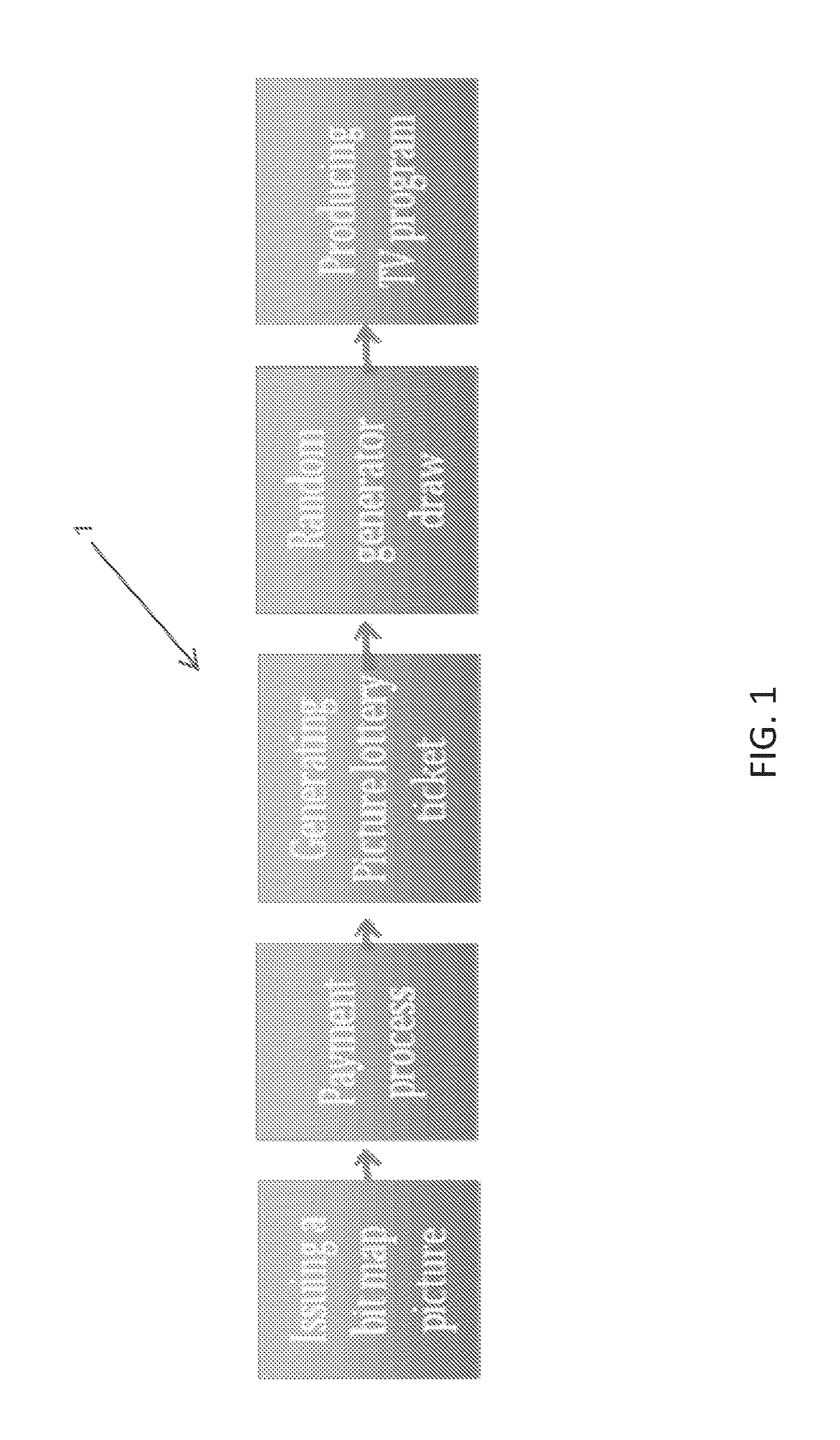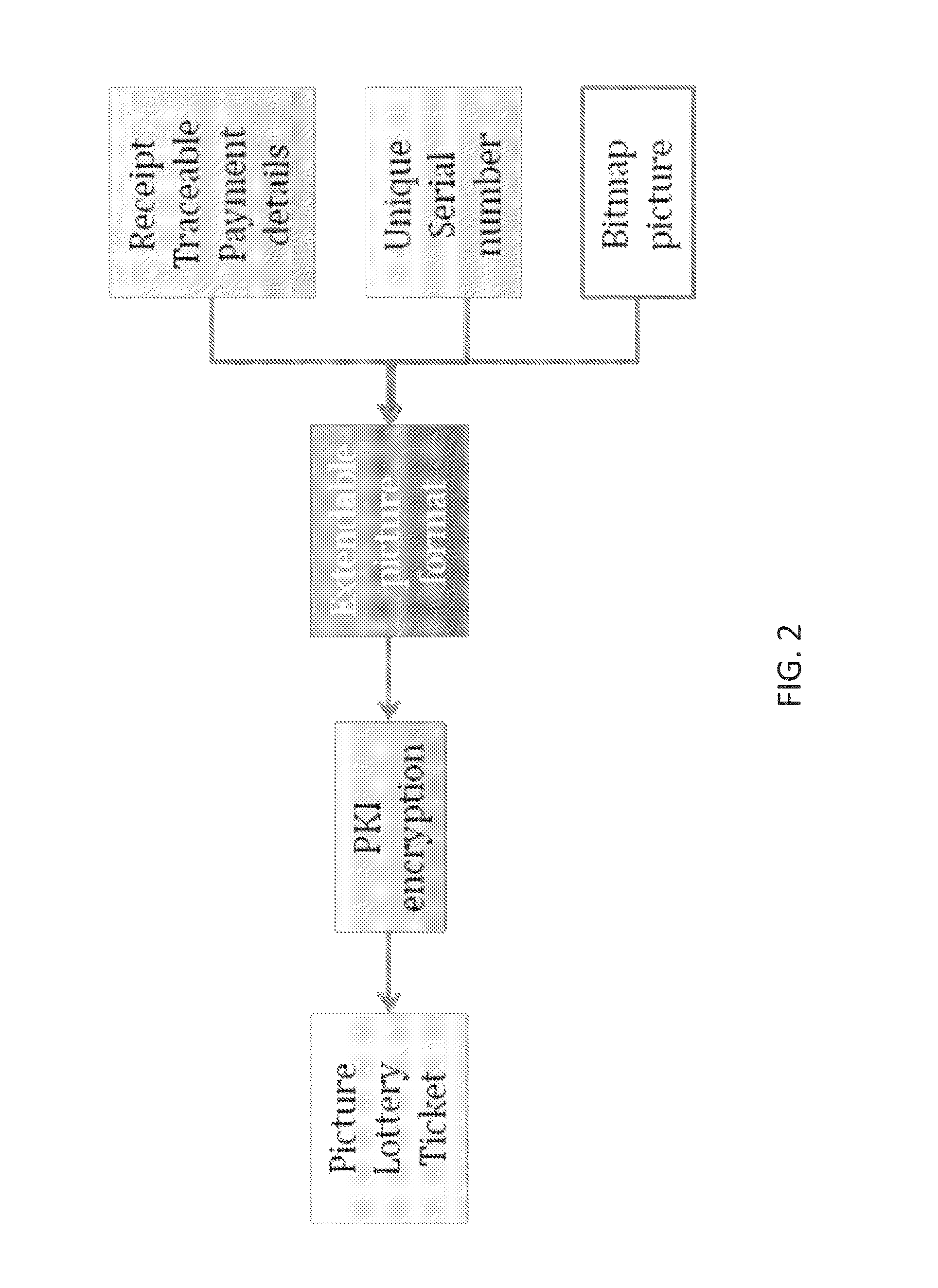Games, lotteries, and sweepstakes and tickets, systems, technologies, and methods related thereto
- Summary
- Abstract
- Description
- Claims
- Application Information
AI Technical Summary
Benefits of technology
Problems solved by technology
Method used
Image
Examples
first example (
Non-Limiting)
Steps in One Method or System of Administering an Embodiment of the Herein Described Games or Lotteries
I. Registering the Customer
[0071]1. In certain embodiments, for a customer to enter the lottery, the customer may provide or register one or more of the following details:[0072]Name[0073]Phone number[0074]E-mail[0075]Address[0076]Birth date or age
Of course, in some embodiments, only some of the example identifying detail listed above may be provided. For example, a phone number and name may be the only information given and may be collected by way of receipt of an SMS or other message from the lottery participant.
[0077]2. Terms of use may be presented or displayed and may be required to be accepted by the customer prior to issuance or acceptance of lottery ticket.
[0078]3. Information registered in the database may be encrypted.
II. Taking the Picture
[0079]1. The customer takes a digital picture utilizing a camera-phone or ordinary digital camera.[0080]—or—
[0081]2. The c...
second example (
Non-Limiting)
Steps in One Method or System of Administering an Embodiment of tThe Herein Described Games or Lotteries
I. Registering the Customer
[0140]1. In certain embodiments, for a customer to enter the lottery, the customer may provide or register one or more of the following details:[0141]Name[0142]Phone number[0143]E-mail[0144]Address[0145]Birth date or age
Of course, in some embodiments, only some of the example identifying detail listed above may be provided. For example, a phone number and name may be the only information given and may be collected by way of receipt of an SMS or other message from the lottery participant.
[0146]2. Terms of use may be presented or displayed and may be required to be accepted by the customer prior to issuance or acceptance of lottery ticket.
[0147]3. Information registered in the database may be encrypted.
II. Taking the Picture
[0148]1. The customer takes a digital picture utilizing a camera-phone or ordinary digital camera.[0149]—or—
[0150]2. The ...
PUM
 Login to View More
Login to View More Abstract
Description
Claims
Application Information
 Login to View More
Login to View More - R&D
- Intellectual Property
- Life Sciences
- Materials
- Tech Scout
- Unparalleled Data Quality
- Higher Quality Content
- 60% Fewer Hallucinations
Browse by: Latest US Patents, China's latest patents, Technical Efficacy Thesaurus, Application Domain, Technology Topic, Popular Technical Reports.
© 2025 PatSnap. All rights reserved.Legal|Privacy policy|Modern Slavery Act Transparency Statement|Sitemap|About US| Contact US: help@patsnap.com



